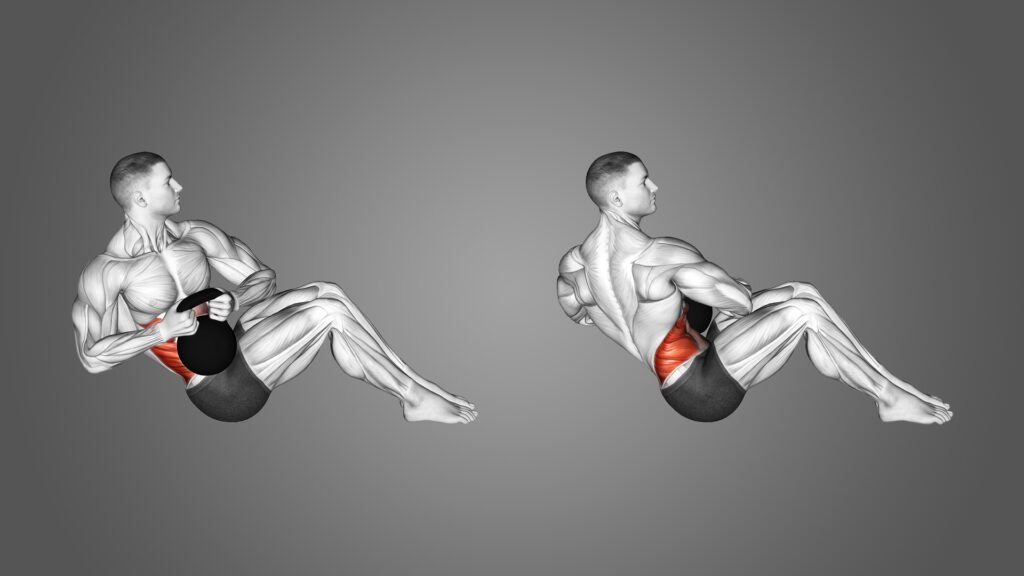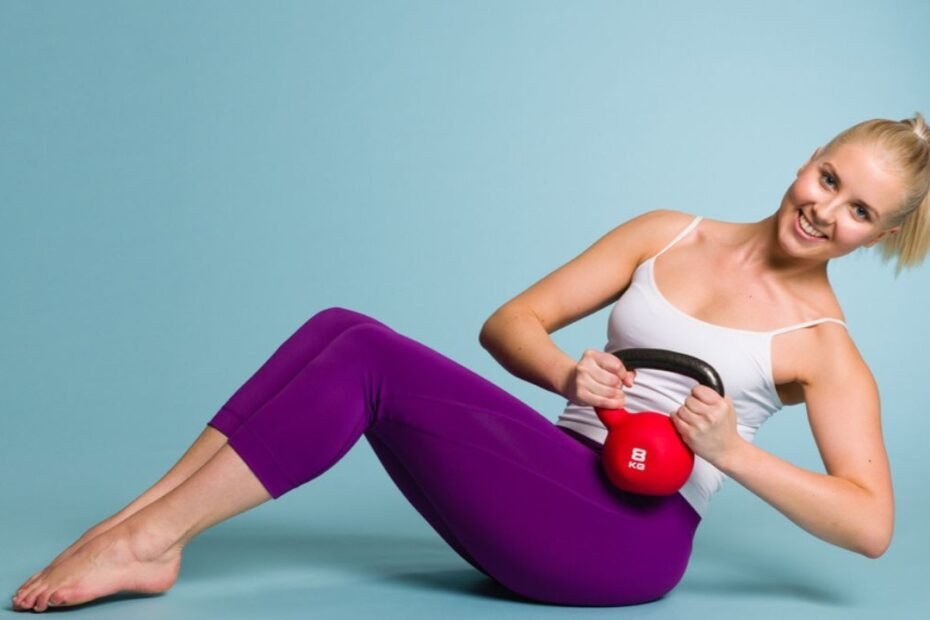Russian twists are a dynamic core exercise that targets the muscles of your abdomen and obliques. In this comprehensive guide, we’ll explore how to perform Russian twists correctly, the muscles worked, the benefits it offers, common mistakes to avoid, and variations & alternatives to enhance your core training.
Muscles Worked
Primary Muscles Targeted:
- Rectus Abdominis (Front of your abdomen)
- Obliques (Muscles on the sides of your torso)
Secondary Muscles Engaged:
- Transverse Abdominis (Deep core stabilizing muscles)
How to Do Russian Twists

Follow these steps to perform Russian twists correctly:
- Starting Position: Sit on the floor with your knees bent and feet flat on the ground. Lean back slightly, creating a V shape with your torso and thighs.
- Hand Position: Clasp your hands together in front of your chest or hold a weight, such as a dumbbell or a medicine ball.
- Twisting Motion: Engage your core and lift your feet a few inches off the ground. This is your starting position.
- Twist to the Side: While keeping your core engaged and maintaining the V shape, rotate your torso to one side, bringing the weight or your clasped hands towards the floor beside your hip.
- Return to Center: Slowly return to the center position, keeping your feet off the ground.
- Twist to the Other Side: Rotate your torso to the opposite side, bringing the weight or your hands towards the floor beside your other hip.
- Repeat: Continue to alternate sides in a controlled, twisting motion. Each side-to-side movement counts as one repetition.
- Breathing: Exhale as you twist to each side and inhale as you return to the center.
Benefits of Russian Twists
Russian twists offer several benefits for your core and overall fitness:
- Core Strengthening: This exercise effectively targets your rectus abdominis and obliques, helping you develop a strong and defined midsection.
- Oblique Engagement: Russian twists specifically engage the oblique muscles, enhancing their strength and definition.
- Improved Balance: Balancing on your sit bones while twisting challenges your core stability and balance.
- Functional Strength: A strong core contributes to better performance in daily activities and sports.
- Versatile Workout: Russian twists can be done with or without weights, making them adaptable to different fitness levels.
Common Mistakes to Avoid
To maximize the effectiveness of Russian twists and minimize the risk of injury, avoid these common mistakes:
- Using Momentum: Perform the exercise in a controlled manner, avoiding jerky or fast movements that rely on momentum.
- Not Engaging Your Core: Ensure your core muscles are actively engaged throughout the exercise to protect your lower back.
- Rounding Your Back: Maintain a straight back throughout the movement. Avoid rounding your shoulders or hunching over.
- Using Excessive Weight: If you’re using a weight, choose an appropriate one that allows you to maintain proper form.
Variations & Alternatives
Variations:
- Weighted Russian Twists: Hold a dumbbell, medicine ball, or kettlebell as you twist to increase resistance.
- Twisting on an Incline Bench: Perform Russian twists on an incline bench to challenge your core from a different angle.
- Partner Russian Twists: Sit facing a partner and pass a medicine ball or weight to each other as you twist.
Alternative Core Exercises:
- Plank: Engage your entire core by holding a plank position on your elbows and toes.
- Crunches: Target your upper and lower abdominal muscles with this classic core exercise.
- Leg Raises: Strengthen your lower abdominal muscles by lifting your legs while lying on your back.
- Bicycle Crunches: Work on both your rectus abdominis and obliques with this dynamic exercise that simulates pedaling a bicycle.
Incorporate Russian twists and other core exercises into your fitness routine to develop a strong and stable core, support your overall fitness goals, and enjoy the benefits of a well-conditioned midsection.
